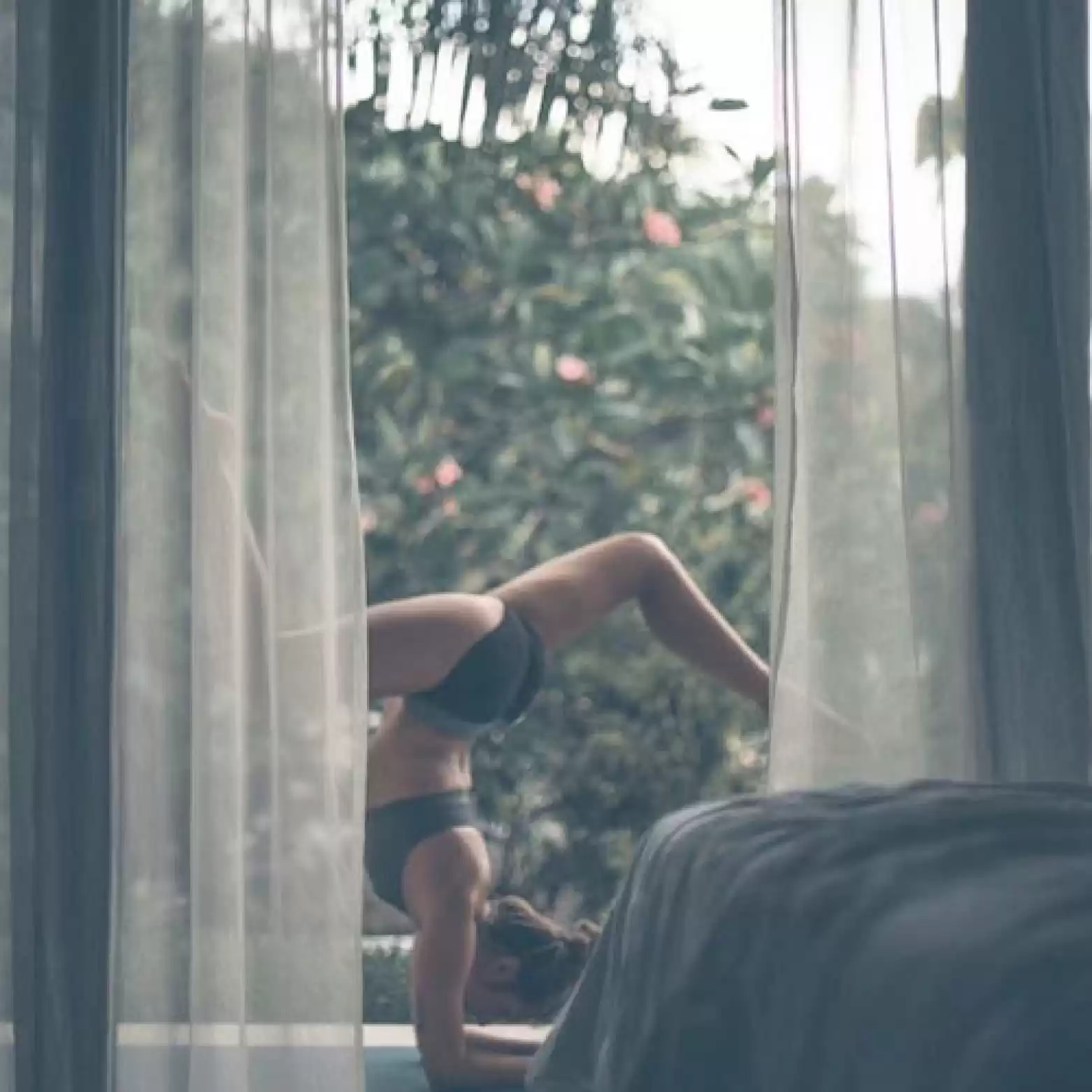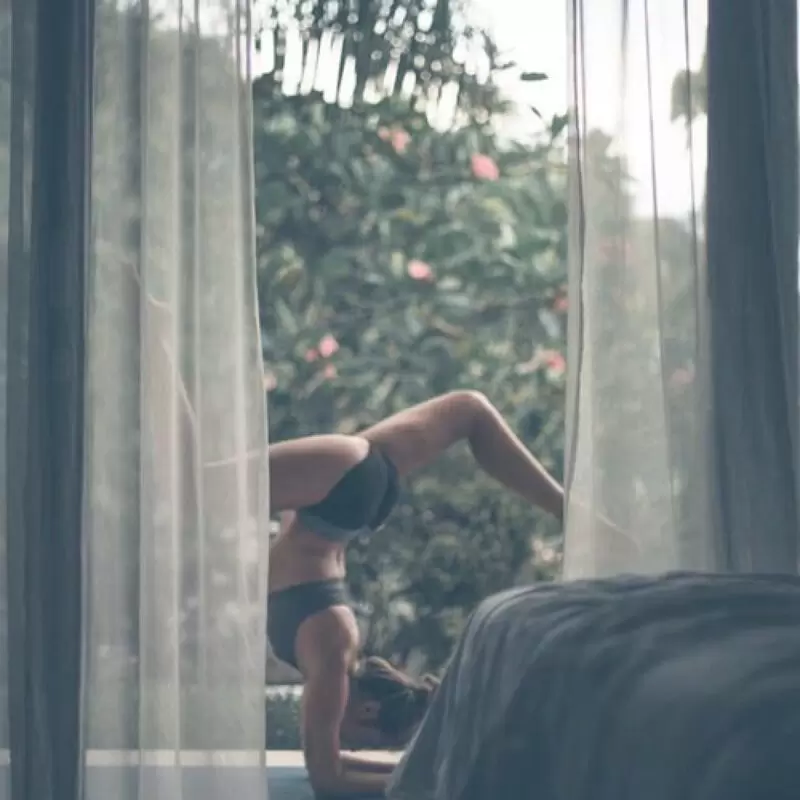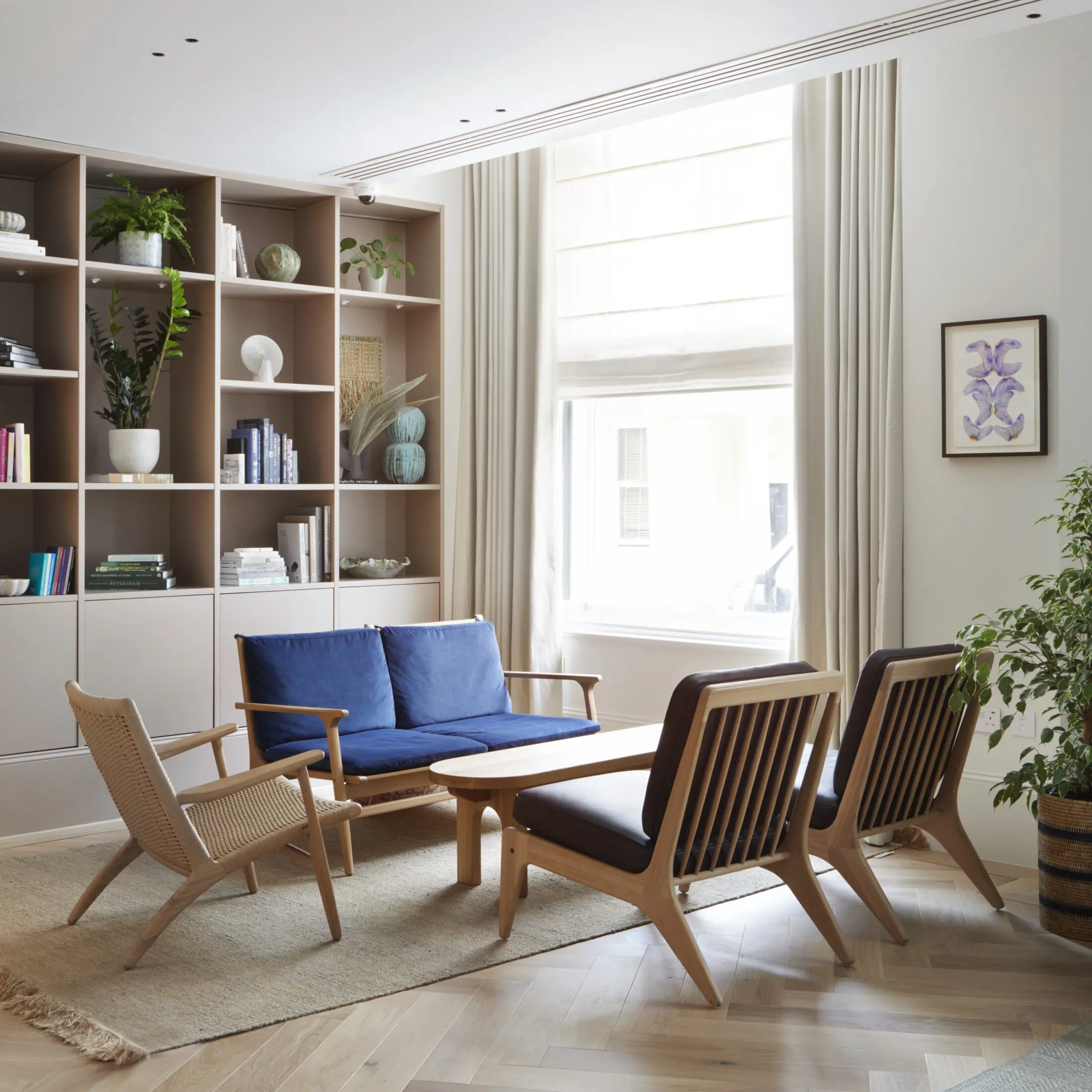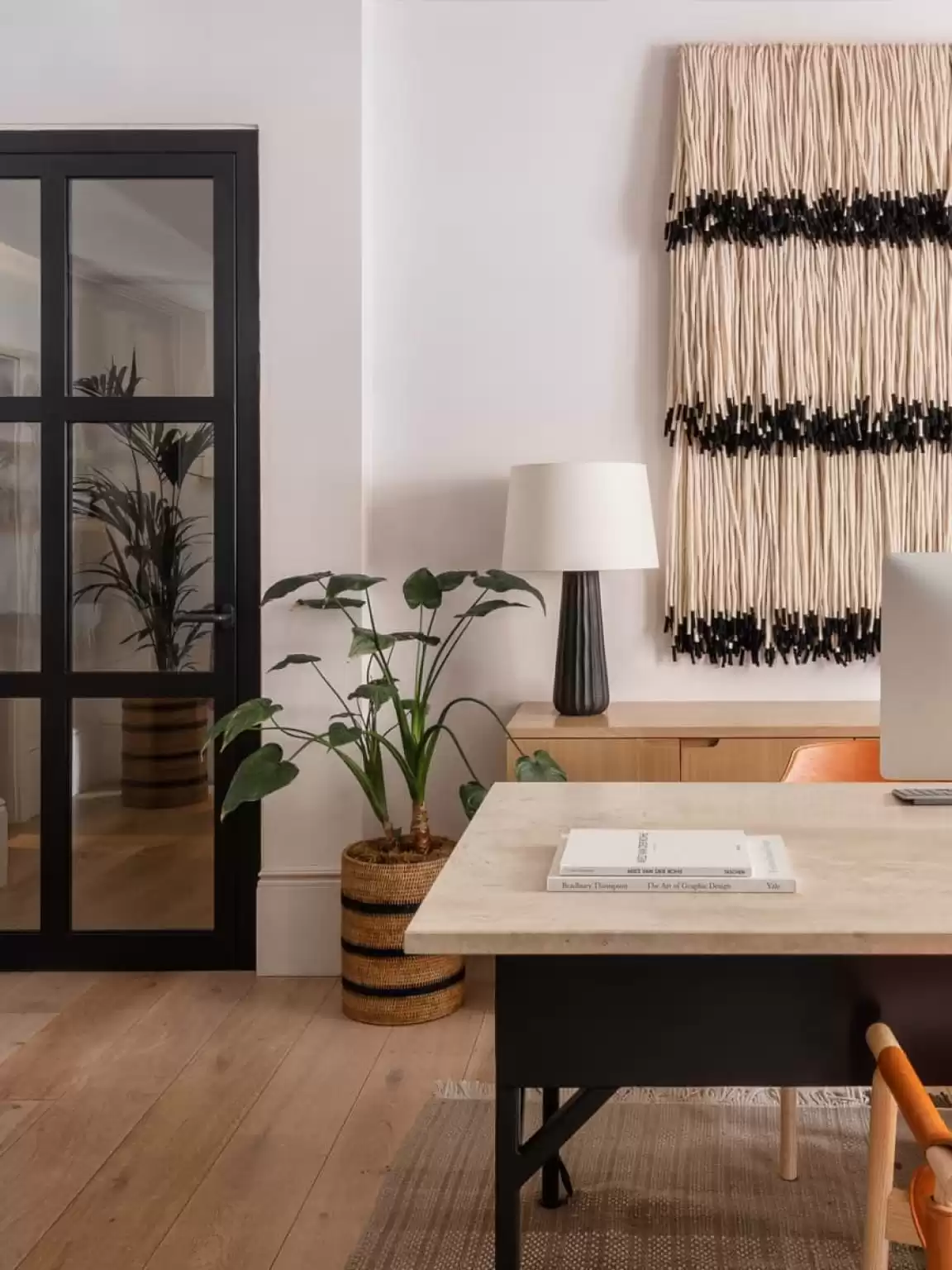The word ‘yoga’ is derived from the Sanskrit root ‘yuj’, meaning union, and it refers to uniting in harmony body, mind and spirit. The yoga we mostly practice in the Western world is a combination of yoga postures (asanas) and breathing exercises (pranayama). With regular practice yoga has the power to guide us towards a state of inner balance and harmony, while also helping us to improve our awareness, strength and flexibility.
The energy of a live group class can be immensely uplifting, but nothing can replace practicing yoga at home. That is the time when you truly learn how to listen to your body, move at your own pace and rhythm, and it is a great opportunity to develop consistency in your yoga practice.
This article will give you some guidance on what you need to get started with yoga at home and ideas to keep you inspired and motivated.
Start with creating space and time
Choose a quiet, uncluttered space in your home. It doesn’t have to be large, but it should be open, clean, not too cold and not too hot. Wherever you practice, it needs to be a place where you can feel at peace. You can create some ambiance with soft lighting, candles and incense. Leave your phone in another room, or at least turn off notifications, so you don’t get distracted. Use an analogue clock to track time.
Setting a dedicated time aside in your schedule will help you to stay consistent with your practice. Be realistic. You can start with only 15 minutes a day (or every other day), and gradually increase the length of time you spend on the mat from there.
Equipment you need to practice yoga at home
If you ask long time practitioners, some of them will say that you only need your mat and a sense of self-commitment. This is a good start, and a high quality yoga mat is definitely worth the investment. At Inhabit we use Manduka Pro mats, because they provide excellent traction and cushioning. They are not only comfortable and hardwearing, but also good for the environment.
In addition, you can also stock your ‘home studio’ with yoga blocks, a strap, blankets and a bolster to give you more support, comfort or better access in some poses. If you enjoy practising to music or follow a sound-only guided sequence, a small speaker will come handy too.
Attitude and setting intention
Attitude and intention are key elements when it comes to practicing yoga at home. As each day is unique, you will feel slightly different every time you get on the mat. Remember to approach your practice with openness, patience and curiosity.
Take time to tune in and notice what emotions, thoughts, challenges come up during your practice. Drop any judgement of yourself. This is an opportunity to listen to your body, learn more about yourself on a physical and emotional level, and practice self-compassion. Often we approach our yoga practice with the same attitude that we approach tasks in life. Do you shy away from challenges? Or do you tend to grit your teeth and push on through? What can you learn from this?
Setting an intention can serve as an anchor and will help you to stay more focused and engaged with your practice. Ask yourself: Why am I doing yoga today? How do I hope the practice will enhance my life? Is my goal to build strength, to gain more flexibility, to clear my mind or a combination of these? Choose the sequence and style of yoga that supports your goals.
Finding inspiration and staying motivated
Building a new habit, such as practicing yoga at home, can take time. If you are new to yoga, start with basic beginner’s yoga sequences and expand your practice as your skills improve. Be patient and take your time. You don’t want to push yourself to do too much too soon, as this might create frustration and can potentially cause injury, which would set you back further.
There are plenty of classes that you can follow online that can help with staying motivated. Look around and try different teachers, different styles and see what works for you.
Below is a collection of some basic poses for you to get started with yoga at home.
Chair pose
This pose will help building strength in the ankles, thighs, calves, and spine, and stimulate the abdominal organs, diaphragm, and heart.
Steps:
- Start standing straight. Inhale and raise your arms perpendicular to the floor. Either keep the arms parallel, palms facing each other, or join the palms at the centre of the chest.
- Exhale and bend your knees, taking the thighs as close to parallel to the ground as possible. You can have your thighs, knees, lower legs together or hip width apart. If you have the legs apart make sure you keep the inner thighs parallel to each other and press the heads of the thigh bones down towards the heels.
- Draw your shoulder blades down along the back, lengthen from the tailbone to the crown and slightly draw in the lower front ribs.
- Hold for 5 to 10 breaths.
Downward-facing dog
One of the most well-known poses in yoga, offering an all-body, rejuvenating stretch. This pose energizes the body whilst calming the mind. It is said to be therapeutic for relieving stress, high blood pressure and asthma.
Steps:
- Start on the floor on your hands and knees. Place your palms slightly forward of your shoulders and your knees directly below your hips. Spread your fingers wide and press down through the roots of the fingers.
- Tuck your toes under and with an exhalation lift your knees away from the floor. Keep your knees slightly bent and heels lifted at first. You can paddle your feet a couple times to gently stretch the hamstrings.
- Press your chest towards the thighs and tilt your sitting bones towards the ceiling. Lengthen the spine from the crown of the head to the tailbone. Widen your between your shoulder blades and draw the shoulders away from the ears.
- If you can keep the back long, avoiding rounding, you can stretch your heels down towards the floor and straighten your knees, but make sure not to lock them.
- Hold for 5 to 10 breaths. To come out place your knees onto the floor and sit back on your heels to rest in child’s pose for a couple breaths.
Plank pose
Build some core strength with plank pose. This position tones the abdomen, as well as strengthens the arms, wrists, and spine.
Steps:
- Start on hands and knees with your palms directly under the shoulders and fingers spread wide. Step back with one foot at a time.
- Push the ground away with your palms, pressing down especially through the roots of the fingers, lightening the load on your wrists.
- Spread your shoulder blades away from the spine. Don’t allow your hips to sag. Press your front thighs up towards the ceiling, while lengthening your tailbone towards the heels. Keep your gaze on the floor, and your throat and eyes soft.
- You can hold this pose for 5 to 10 breaths, or challenge yourself by holding it for a whole minute (whichever is longer).
- You can also start in downward facing dog, then draw your torso forward until the shoulders come directly above the wrists and the arms are perpendicular to the floor.
Cobra pose
Boost your immune system and open your heart with cobra pose. This pose promotes flexibility in the shoulders and spine, strengthens the back and stretches the chest and abdomen. Known to be therapeutic for the lungs.
Steps:
- Lie on your belly, on the floor and stretch your legs back. Place your hands under your shoulders with the top of the fingers in the same line as the top of your shoulders. Hug the elbows in towards your body, roll your shoulders down and away from the ears.
- Firm your thighs and press the tops of your feet into the floor. As you inhale begin to push the earth away with your palms, also using your back muscles to lift up.
- Keep the shoulders away from the ears and puff the side ribs forward. Lift through the top of the sternum, but avoid pushing the front ribs forward, as it hardens the lower back.
- Distribute the backbend evenly throughout the whole spine. If you have a healthy back you can work towards straightening the elbows.
- Hold for 3 to 5 breaths and release the chest to the floor on an exhale. Sit back on your heels and rest in child’s pose.
Bridge pose
Another great immune booster, bridge pose stimulates the abdominal organs, lungs and thyroid. It improves digestion and helps with alleviating stress, anxiety and mild depression. Bridge pose can be therapeutic for menstrual pain, high blood pressure and asthma.
Steps:
- Lie down on your back with your knees bent, arms next to the body, and heels hip width apart, close to the sitting bones.
- As you breathe out press your feet and arms into the floor, and roll your pubis up towards the ceiling. Gently firm the buttocks as you are lifting them away from the floor, bringing your thighs almost parallel to the floor.
- Keep your feet and thighs parallel, and your knees directly over the heels. Keep pressing your heels to the ground as you lift higher. Lift your chin slightly away from the chest, so you can breathe freely.
- If you have healthy shoulders you can mesh your fingers together below your pelvis and extend through the arms to help you stay on the tops of your shoulders.
- You can make this pose restorative by sliding a block or bolster under your sacrum, and resting your pelvis on this support. If you have sensitive neck it is a good idea to place a folded blanket under your shoulders to protect your neck.
- Hold for 5 to 10 breaths. Release with an exhalation, rolling the spine slowly down onto the floor. Hug your knees to the chest.
Would you like to complement your yoga practice with some meditation? Follow the link to our article for tips on how to get started, and listen to our pre-recorded meditations online.



